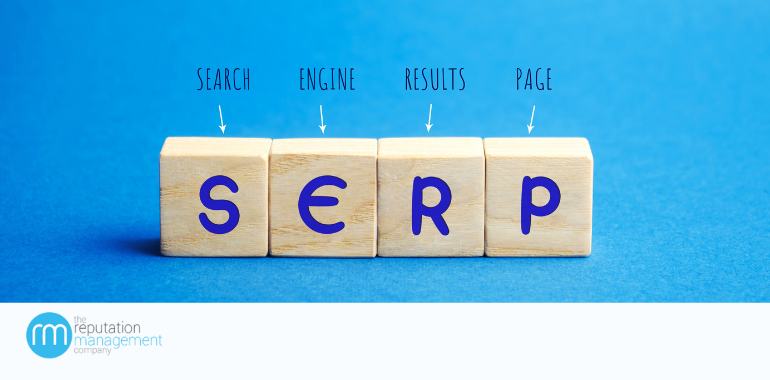How Much Do Online Monitoring Tools Help Reputation Management?
One of the first things online reputation managers learn to do is sign up for alerts. You can go a level above passive alerts and subscribe to a business intelligence tool that purports to crawl the web and find mentions of protected keywords.
These tools are useful and necessary but when you need to measure their effectiveness there isn’t a standard to compare them to.
Katy Perry is more likely to be mentioned on the web than Arthur Q. Smith, esq. And the more popular or well-known a name is the more unlikely it becomes that a simple alert will flag the content you’re really looking out for.
Low-end alert tools send you emails. The emails may arrive late, they are prone to including false-positive hits, and they often miss obscure but harmful content published on free websites.
Alert services and business intelligence tools don’t capture everything. You’ll need reasonable benchmarks for measurement and you may have to devise them on the fly for a client with little or no history in the media, social media, or on the web.
Passive vs Active Reputation Management
There are many ways to classify the activities or processes of reputation management. Passive and active reputation management is simple, easy-to-explain concepts that most clients immediately understand.
Passive reputation management is pre-emptive. You’re watching for anything that might be a problem.
Active reputation management becomes necessary when hostile public interest is aroused: perhaps an unhappy customer has taken a complaint to the Internet or the media, or maybe a high-profile employee has been accused of inappropriate behavior.
It is possible – even likely – that some public relations or law clients need several concurrent or consecutive reputation management campaigns. Each campaign would address something specific.
Each campaign would need its own set of alerts, but they might overlap in their notifications.
Alert-based Monitoring Is Time-Sensitive
If a client is attracting unwanted attention from the news media simple news alerts may be insufficient because they may not arrive until hours or a day after the news stories have been published.
A very active, an angry blogger might publish something new every day although most only post a few rants. Unless the blogger is very popular, their articles are less likely to stimulate negative attention than major news media sites.
It’s a good idea to monitor the news directly by checking it several times a day. Your alerts will help you but they are not 100% reliable.
You must decide how long you can afford to wait before responding to new content that impinges a client’s reputation. A PR specialist may need to quickly respond to media inquiries. An attorney may need to file a takedown request.
Simple alert tools may allow an embarrassing piece of content to go unanswered for a long time.
Business Intelligence Crawlers are Limited
Even the best tools cannot crawl the entire web or do it on a daily basis. With more than a dozen data centers to work with, Google says it cannot crawl the entire web every day. Google’s crawling is the gold standard of Internet measurement.
Business intelligence tools may be blocked from many websites, too. They offer nothing of value to the sites they crawl and they may use up precious (and expensive) server resources. Many site owners take measures to prevent these tools from crawling their content.
Aggressive crawling is more likely to find new content but it may overstate the value of the content. If the tool’s purpose is to estimate how likely an article is to be found in a web search, the tool lacks any data from the search engines’ algorithms. If the tool’s purpose is to estimate social media reach, it’s limited by the number of platforms it monitors.
Niche Forums and Social Media Sites are Important
You’ll occasionally hear about sites like Reddit and 4Chan but they are not the only popular online discussion sites where reputations may be shattered.
There are thousands of specialty or niche forums with large communities of passionate members. People who own recreational vehicles, hiking enthusiasts, fitness experts, homeschoolers, veterans, sports fans, political communities, and many other groups gather online in places other than Facebook and Twitter.
Their passions sometimes spill over into boycotts, angry rants, sharing news stories, and other things that may tarnish a client’s reputation. Online monitoring tools may promise to catch a high percentage of these sites’ new content but there will always be gaps in the data.
From the start of the campaign, you’ll need to compile a list of forums and social media sites where a client’s name or protected keywords are likely to be mentioned.
There are sometimes mirror sites that reproduce content originally published elsewhere. The more popular a social media platform is the more likely there will be secondary mirror sites republishing its content. For a reputation management campaign, these mirror sites are as important as the sites of the original publication.
Some social media artists republish the same content on many different platforms. People who attack your client may do the same thing. Worse, if you issue a successful takedown request on one site you may have overlooked another site with the same content.
And the less important mirror sites may have little to no customer support. Some of them are completely automated, operating outside the guidelines of the sites whose content they republish.
Every Hit from a Monitoring Tool Is a Starting Point
When you receive notice of new content that merits your attention you should begin looking for copies of that content, or similar sites that link to or mention it.
Removing or responding to the most prominent negative content may not be enough. But neither should you assume you’ll have to respond to every customer complaint on every knock-off complaints board.
You should build a list of sites likely to replicate content from other sites. Use this list in evaluating each client’s reputation needs. If you feel no one is visiting a website then it’s safe to put that site into a lower priority box until you have more time to deal with it.
Each negative complaint, social media rant, or angry blog or forum post is a potential snowball that could start rolling downhill. How you respond to the original content may have little or no effect on anything that spirals outward from the original point of publication.
The monitoring tools tell you something is up but it’s your responsibility to triage what is happening and advise your reputation strategy team of what their new priorities should be.
Pre-emptive or Active Reputation Management Triggers Alerts
Some clients monitor their protected keywords proactively regardless of what they ask public relations, online reputation managers, or legal representatives to do. If a reputation team is creating new content the client should be aware of that new content before it appears in their monitoring tools. A misunderstanding could lead to an angry phone call or an unnecessary takedown request.
If someone is actively engaged in a hostile campaign they may also be monitoring the Internet for new mentions of the client’s protected keywords. Activist monitoring can lead to an arms race of new content in which no one wins.
Your monitoring tools won’t tell you if someone else is also using and responding to monitoring tools. You’ll need to infer this activity yourself from the data you see.
Online Monitoring Tools Show You the Tip of the Iceberg
These tools do an adequate job of surfacing high-value content. You’ll pay more for timeliness. Your judgment creates the best value for these tools as you learn to sift through the data.
Although some tools offer sentiment analysis that remains an uncertain science. Machine learning systems have come a long way in the last 20 years but they still have limits. Sentiment scoring is more of an art than science because words we might assume are used in a hostile way could be used in a complimentary context, too.
Everything that a machine learning system flags as relevant, hostile, or favorable should be reviewed. The learning algorithms are good but they’ll miss nuances that lie outside the scope of their data.
Blog and news headlines may hide contrary content. The headlines don’t always reflect what is in the articles. If it’s prominent enough to appear in your alerts or monitoring tools then you should check it out, or have someone on your team check it out.
Conclusion
Online tools and automated processes are both necessary and helpful in reputation management. But there is no substitute for human experience, judgment, and personal communication.
You must balance the need for gathering information against dredging up too many obscure details. And though everyone should be kept in the loop, you want to avoid meticulous discussion of every news headline or keyword mentioned.
Your tools may be good but you need to establish guidelines for how everyone will use them and when their findings merit discussion. The weekly client report is often the best place to show people you’re on the job and aware of what’s happening. It also helps you adjust your strategies on the fly.
The bottom line here is that you, the lawyer or PR specialist charged with handling a client’s reputation campaigns, must remain in charge. The tools cannot make the decisions for you. They can only help.




